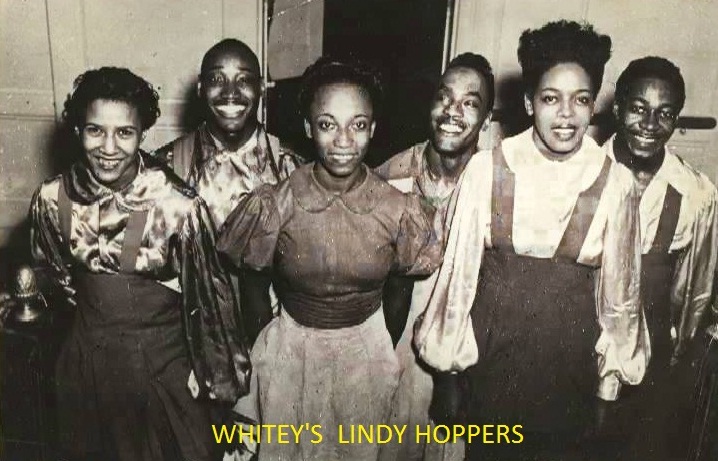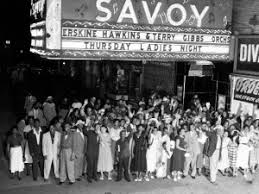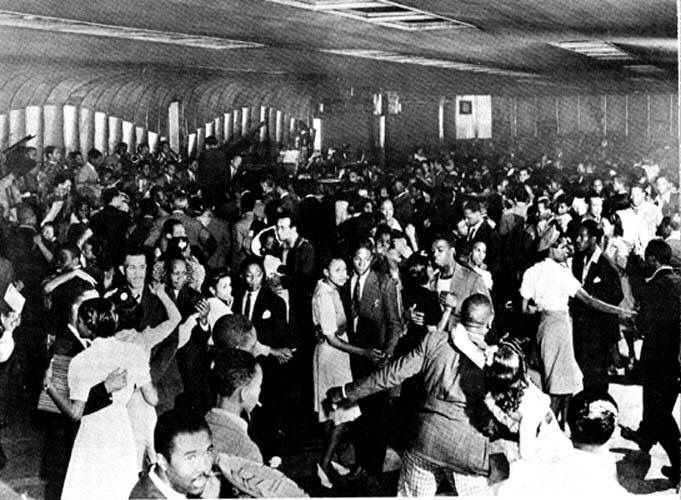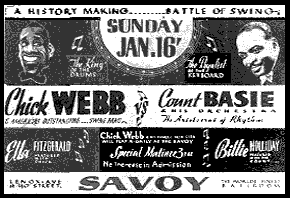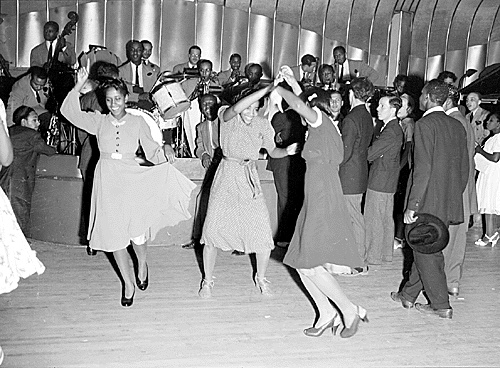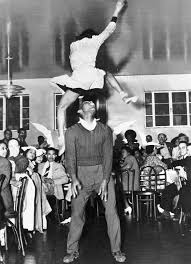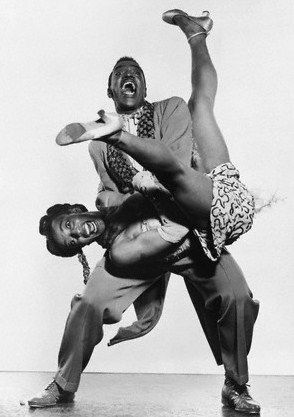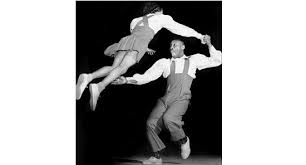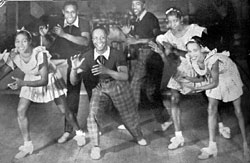The Lindy hop is an American dance which was born in the African American community of Harlem, New York during the late 1920s in conjunction with swing/jazz music. Lindy Hop is closely related to earlier African American vernacular dances such as the Cake Walk, Texas Tommy, the Charleston, and more. Harlem was envogue as millions of African Americans migrated to the North to escape the terror of Southern Jim Crow Segregation. At this same time thousands of West Indian migrants joined these African Americans in search of place to call home and Harlem became that home. With them comes the musical, cultural expressions and dance movements of the times. While Harlem became envogue so was this new popular dance called Lindy Hop. It is believed a dancer named “Shorty George” Snowden and his partner, Mattie Purnell, won a 1928 dance marathon contest at The Manhattan Casino in New York City. It was during this contest that the dance couple executed a break-away step, This was revolutionary, people hadn’t seen this in other partnered style dancing, and they won the contest. When reporters asked him what dance he and his partner were doing, he supposedly responded, “The Lindy” or something like “that’s just Lindy’s Hop” as legends has it. Thus the Lindy Hop is born. Snowden was making a reference to Charles Lindbergh’s historic trans-Atlantic flight in 1927, where newspaper headlines read: “Lindbergh Hops Atlantic.” Meantime at the Savoy Ballroom the only integrated ballroom in Harlem this dance “the Lindy Hop” got even more popular as people danced to the top Big Bands in the land such as Chick Webb and other houseband leaders over the years. The Lindy Hop but quickly gained its own fame through dancers in films, performances, competitions, and professional dance troupes. It became especially popular in the 1930s with the upsurge of aerials noteably done by the Whitey’s Lindy Hoppers (Frankie Manning, Norma Miller, Billy Ricker, Al Minns, Willa Mae Ricker, Anne Johnson and host more) were a professional performing group of exceptional swing dancers that was first organized in the late 1920s by Herbert “Whitey” White in the Savoy Ballroom. The popularity of Lindy Hop declined after World War II as many of the male Lindy Hoppers went to serve in the military and it converted to other forms of dancing, but it never disappeared during the decades between the 1940s and the 1980s. Groups like the Mama Lu Parks dancers kept the Savoy legacy alive in Harlem and abroad to places like England, Sweden, Africa, Mexico and more. During the 1980’s European and British dancers showed interest in it starting from the beginning of the 1980s and thus making the Lindy Hop become even more of a globally celebrated dance around the world even today. It is important to note that the dancers who created and cultivated Lindy Hop in Harlem ballrooms like The Savoy, The Alhambra, and Small’s Paradise didn’t codify their dancing into patterns and counts. Today, some instructors will use a count to differentiate Lindy Hop from other other styles by stating that is has an 8-count basic and 6-count patterns. We very much love to provide more context about this dance we love so much but of course we are limited in space so instead should you be interested in learning more about the history of Swing dance, jazz, swing era music and African American culture we would like to share the following resources and of course utilize the New York Public Library (nypl.org).
Further Resources
Black Dance From 1619 to Today By Lynne Fauley Emery
Harlem Renaissance Lives By Henry Louis Gates
Jazz Dance: The Story of American Vernacular Dance By Marshal and jean Stearns
Steppin on the Blues: The Visible Rhythms of African American Dance By Jacqui Malone
Frankie Manning: Ambassador of Lindy Hop By Frankie Manning and Cynthia Millman
The Warmth of Other Suns: The Epic Story of America’s Great Migration by
Isabel Wilkers
Swingin at the Savoy By Norma Miller
Stompin at the Savoy By Norma Miller
Videos:
Hellzapoppin
A Day at the Races
